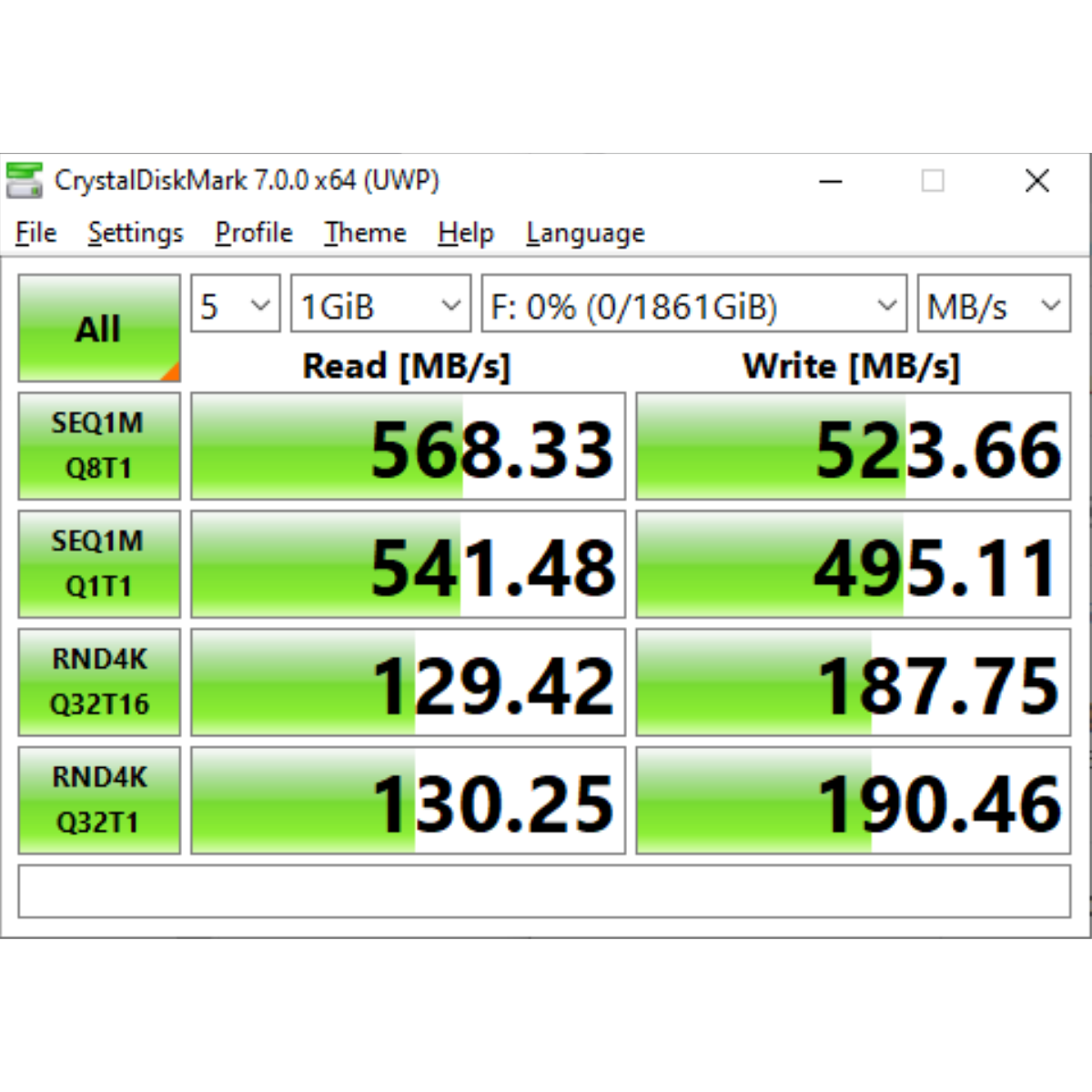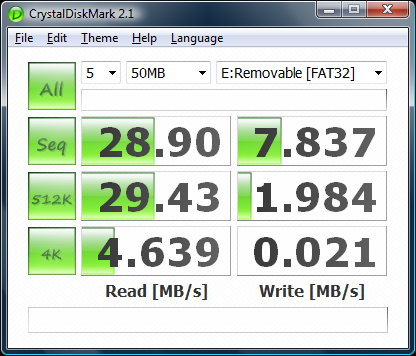

Double click either the 32bit or 64bit version to run. Inside, you’ll find DiskMark32.exe and DiskMark64.exe. I don't think anyone would recommend putting it into standby as you mention, that continues to drain power. How to Use CrystalDiskMark Download CrystalDiskMark and Unzip. I added clarification re: desktops and notebooks, though I'd suggest powering down a notebook with an SSD is comparable to putting it into hibernation. I've updated the story for the author to reflect hibernation as well. This video shows you how to use the CrystalDiskMark disk benchmark utility and how to interpret the results.CrystalDiskMark is a relatively quick and dirty d. You're absolutely correct about indexing. Thanks for pointing both of these things out. Laptops for example you'll want to hibernate to avoid discharging the battery while in sleep mode. NVMe M.2 SSD, hard drives, external drives, SD cards, thumb drivesif it.

Not limited to 2GB.Also, hibernation has benefits over standby where hibernation will allow your system to return to a fully working state after removing power whereas standby requires power to still be supplied to your system. CrystalDiskMark is the go to software for testing the speed of any storage device. Disabling indexing will result in slower searching.Hibernation: Amount of space saved by turning this off is equivalent to the amount of RAM in your system. It's used to find files more quickly in search. Let's retire BlackMagic's Disk Mark and embrance Amorphous Disk.KWReidIndexing is not used to access files more quickly. There's plenty of aspects that aren't covered, such as latency, burst performance, power consumed, and mixed random read/writes, but this is a massive step in the right direction for gauging SSD performance on macOS. Also, CrystalDiskMark measures IOPS (Input/Output Operations-per-second), which is similar but also a different measure of disk speed. Usually, an OS wouldn't have that deep of a queue, but the Q1T1 does mimic a singular request. The default depth is pretty high for the test. CrystalDiskMark tests random reads and writes both as queued requests and single requests. Random Read and Write tests are as important, if not more so, as many SSDs can deliver fast maximum continuous read and writes but much less so for random small data blocks. This is useful but only measures one aspect of an SSD, and doesn't necessarily mimic accurately how most disk interactions occur. So why am I always complaining about BlackMagic Disk Speed TestīlackMagic's Disk Speed Test only tests one thing, continuous throughput. While it isn't a direct port, it's heavily inspired by the famed and loved Windows utility, CrystalDiskMark. The first commenter on FaceBook pointed out that we finally have a good disk benchmark utility AmorphousDiskMark. Awhile back, I made a video about USBc and the classic Mac Pro but lamented yet ago the terrible benchmarking on macOS.


 0 kommentar(er)
0 kommentar(er)
